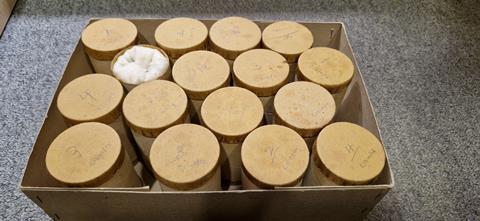Previously attributed to August Wilhelmj, Camillo Sivori is now believed to have made the recordings, which include his unpublished second Violin Concerto

Read more news stories here
The playing of violinist Camillo Sivori (1815-1894), the only pupil of legendary violinist Niccolò Paganini, is revealed to have been immortalised via a group of primitive wax phonograph cylinder recordings held by the British Library.
Based on circumstantial evidence and what was known by the donor, the Library’s curator of classical music, Jonathan Summers, had previously attributed the cylinders to the German violinist August Wilhelmj (1845-1908), who had lived in London at the end of his life. The recordings were estimated to have been made around 1900. Pieces recorded include Paganini’s Witches’ Dance and Sivori’s second Violin Concerto.
It is now believed that the recordings were made about a decade earlier than previously thought. Following extensive research in the UK, France, Germany and Italy, American researcher Andrew Krastins discovered that Sivori almost certainly recorded the cylinders in Genoa, possibly days before his death in 1894.
The British Library acquired the cylinders in 2005 from a former employee of the London branch of the Schott Music publishing house. The employee informed the British library that the cylinders were thought to have been recorded by Wilhelmj, whose compositions were published by Schott.
![]()
’Wilhelmj is extremely unlikely to have recorded the cylinders because by the earliest time the cylinders could have been made, he had already given up public performance and none of the pieces recorded but one was ever in his known concert repertoire,’ writes Krastin, recalling his research. ’The only person presently known to have performed and have had access to the [unpublished] Sivori Second Violin Concerto was Sivori himself.’
He continues: ’The inscription on the Witches’ Dance cylinder box states: “as played by Paganini.” As Paganini’s only pupil, Sivori knew how Paganini played; Wilhelmj could not because Paganini died five years before Wilhelmj was born. However, at the time of Sivori’s death, the phonograph was extremely rare in Europe and was not available to the general public.’
Sivori was an active soloist even in the final years of his life and had access to a phonograph in 1892 and 1894. It is believed that the cylinders ended up in London thanks to Enrico Copello, who acted on behalf of phonograph inventor Thomas Edison demonstrating recorded sound throughout Italy. Copello worked for the Edison Phonograph Enterprise headquartered in London and likely brought the cylinders there.
‘Mr. Krastins’ discoveries are truly astonishing,’ said Jonathan Summers. ‘The attribution to Sivori makes these cylinders among the most important known to exist. Sivori began performing while Beethoven was still alive. This makes him the earliest-born classical musician known to have made recordings.
’To hear Paganini’s only pupil performing entire Paganini compositions is thrilling and haunting.’
The British Library has made new transfers of the cylinders on its new state-of-the-art Endpoint Cylinder Transfer Machine, with plans to publish on the British Library website.
Krastin’s research can be read here.
![]()

Read: Paganini’s ‘Il Cannone’ violin receives X-ray treatment
Read: Trills and embellishments: exercises from Wilhelmj and Brown’s A Modern School for Violin
The number one source for playing and teaching books, guides, CDs, calendars and back issues of the magazine.
In The Best of Technique you’ll discover the top playing tips of the world’s leading string players and teachers. It’s packed full of exercises for students, plus examples from the standard repertoire to show you how to integrate the technique into your playing.
The Strad’s Masterclass series brings together the finest string players with some of the greatest string works ever written. Always one of our most popular sections, Masterclass has been an invaluable aid to aspiring soloists, chamber musicians and string teachers since the 1990s.
American collector David L. Fulton amassed one of the 20th century’s finest collections of stringed instruments. This year’s calendar pays tribute to some of these priceless treasures, including Yehudi Menuhin’s celebrated ‘Lord Wilton’ Guarneri, the Carlo Bergonzi once played by Fritz Kreisler, and four instruments by Antonio Stradivari.













































No comments yet